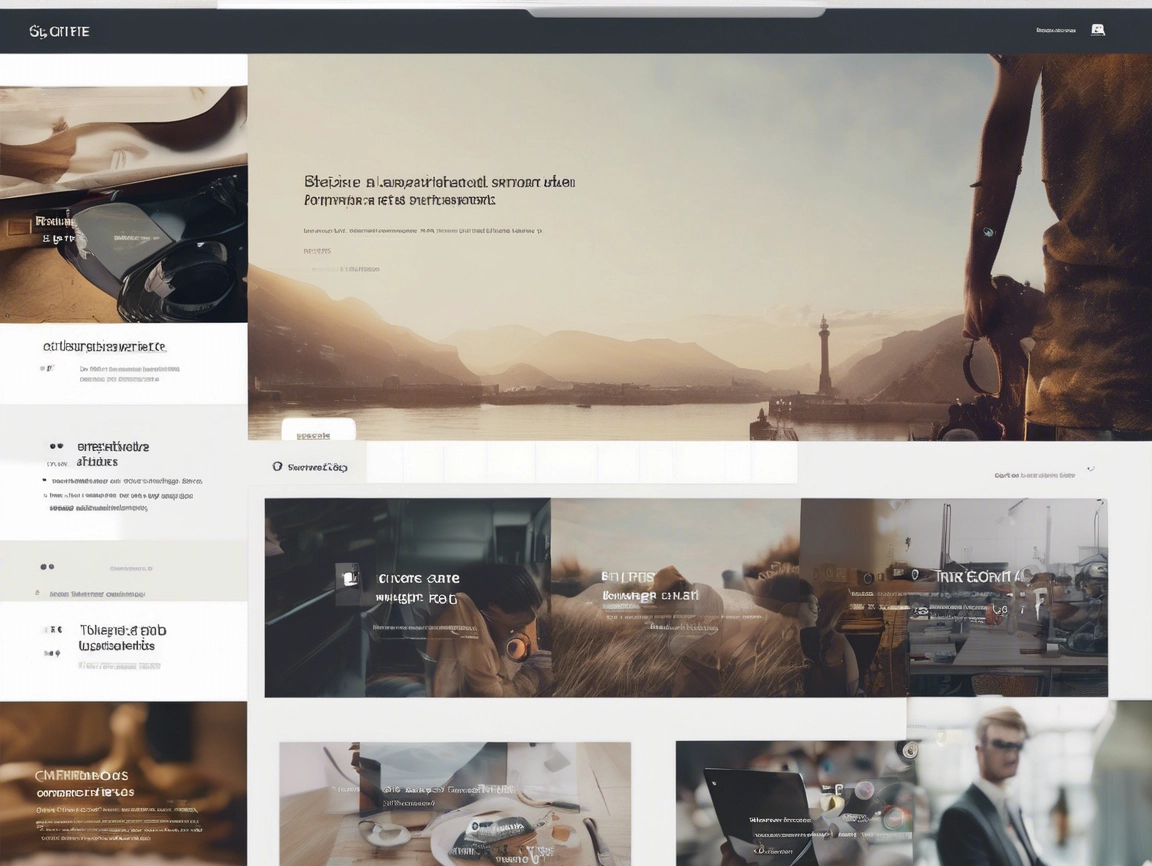Cap Puckhaber, Reno, Nevada
When it comes to building a website, whether for a personal blog, business, or e-commerce store, understanding the 6 Key Elements of a Successful Website Design is crucial. Not only does it influence the user experience (UX), but it also plays a significant role in search engine optimization (SEO), conversion rates, and overall site performance. For beginners, understanding the importance of individual page layout, structure, use of copy and headers, intuitive design, and mobile-friendliness is key to creating an effective and professional-looking website. Let’s dive into the most important aspects of web design and why they matter.
1. Individual Page Layout and Structure
Each page on your website should be designed with a clear layout that helps users find the information they need quickly and easily. The structure of a page includes everything from where your text, images, and buttons are placed to how users navigate through the content. A clean, well-organized layout guides users naturally through the page and encourages them to engage with the content. Understanding the 6 Key Elements of a Successful Website Design allows you to create this seamless navigation.
Consider using a simple, consistent layout for each page with defined sections like a header, main content area, and footer. This makes it easier for users to understand your content at a glance and take action (such as clicking a link, signing up for a newsletter, or making a purchase). Clear call-to-action (CTA) buttons, well-defined text blocks, and a straightforward navigation bar can help improve user engagement and conversions.
2. Use of Copy and Headers (H1, H2, H3)
When writing content for your website, the use of headings (H1, H2, H3) is essential for both user experience and SEO. Headers break up your content into digestible sections, making it easier for users to scan and find what they’re looking for. But they’re not just for readability—they’re also an important SEO tool. Mastering the use of headers is one of the 6 Key Elements of a Successful Website Design.
- H1: The most important header on your page. It should clearly define the topic of the page, often including your main keyword. It’s the first thing search engines look at when indexing your page.
- H2: These are secondary headers that organize your content into subtopics. They should also include relevant keywords, helping search engines understand the structure of your page.
- H3: These are used to break down even further, providing detail or supporting information for each H2 section.
Good copywriting also involves keeping your content concise, engaging, and informative. Avoid cluttering the page with too much text, and always focus on what’s most important to your visitors. Using keywords naturally in your copy helps with SEO, but don’t overstuff your content with them.
3. Titles and SEO
Page titles play a critical role in SEO. They not only show up in search engine results but also in the browser tab when a user visits your site. An optimized title should be descriptive, include relevant keywords, and ideally be under 60 characters so it doesn’t get cut off in search results. It should also be unique for each page. Crafting effective titles is part of the 6 Key Elements of a Successful Website Design.
For example, if you have a page about web design services, the title could be something like, “Professional Web Design Services for Small Businesses | Website Jockey.” This title clearly defines what the page is about, uses important keywords (web design, small businesses), and gives an indication of the value visitors will get.
4. Choosing Intuitive, Attractive, and Mobile-Friendly Designs
The design of your website should be both visually appealing and easy to navigate. Intuitive design means your visitors should be able to find what they’re looking for without frustration. Clean layouts, consistent fonts, and easy-to-read color schemes all contribute to a positive user experience.
Additionally, mobile-friendliness is a must in today’s digital world. With more people browsing the web on their phones, ensuring your site is responsive (adapting to different screen sizes) is crucial. Many website builders today offer mobile-friendly templates, so take advantage of these tools to create a site that works seamlessly across devices. Mobile-friendly design is an integral part of the 6 Key Elements of a Successful Website Design.
5. Avoid Overdoing It with Videos/GIFs
While videos and GIFs can enhance user engagement and provide valuable content, it’s important not to overwhelm your site with them. Too many videos or GIFs can slow down your site’s load time, which negatively impacts the user experience. Additionally, overuse of media can make the page feel cluttered, distracting visitors from your key messages.
Use videos and GIFs sparingly and only when they truly add value. For example, a product demo video or an explainer video can enhance understanding and lead to better conversions. But make sure these media files are optimized for web performance, so they don’t slow down your site. Proper use of media is one of the 6 Key Elements of a Successful Website Design.
6. Measuring Traffic, Clicks, and Conversions
Once your website is live, it’s crucial to monitor its performance. Using tools like Google Analytics, you can track traffic, user behavior, and conversions. This data helps you understand how visitors are interacting with your site, which pages are performing well, and where improvements are needed. Measuring performance is one of the 6 Key Elements of a Successful Website Design.
- Traffic: Know where your visitors are coming from (organic search, social media, paid ads, etc.), and use this information to optimize your marketing strategies.
- Clicks: Monitor which elements on your site (buttons, links, images) are being clicked most frequently. This can tell you where visitors are engaging with your content or products.
- Conversions: Whether it’s making a purchase, filling out a form, or subscribing to a newsletter, tracking conversions helps you assess the effectiveness of your website in meeting its goals.
Conclusion
Web design is not just about making your website look good—it’s about creating a seamless, intuitive experience that helps your visitors find what they need and take action. By focusing on clean page layouts, strategic use of copy and headers, mobile-friendly designs, and performance measurement, you can create a website that’s not only functional but also optimized for SEO and conversions. Always remember: a website should work for your visitors, not just look good for them. Keep things simple, effective, and user-centric to ensure the best results. Happy designing!
Want more website tips from a fellow small business owner? Follow me, Cap Puckhaber, at WebsiteJockey.com where I share no-fluff insights on building, launching, and securing your online presence like a pro.
More blogs



